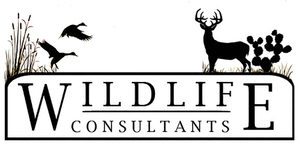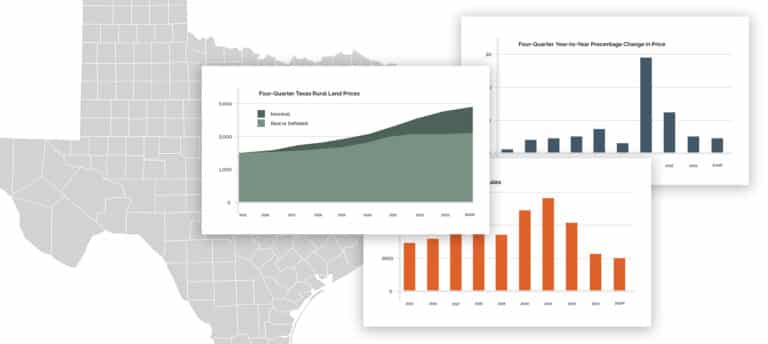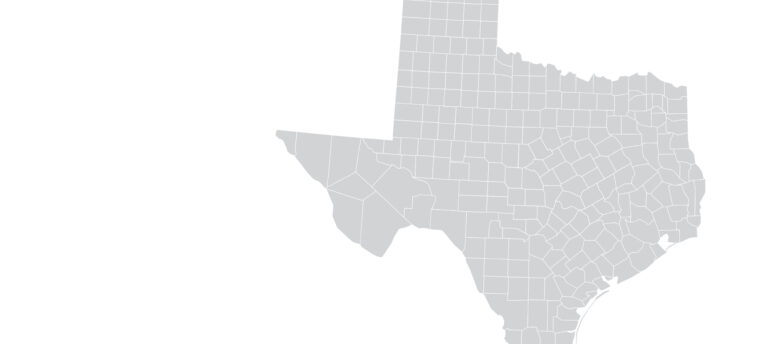
Thanks to 1-d-1 valuation, open space land in Texas can be taxed at its production value instead of its market value. Originally, the 1-d-1 valuation was limited to farming and ranching operations, but in 1995, with the passage of Proposition 11, the special valuation was expanded to include wildlife management.
This is good news for many landowners who purchased their ranches for recreational purposes instead of agriculture. Now landowners can focus their conservation efforts on improving wildlife habitat without sacrificing the benefit of the lower property tax bill resulting from the special valuation. In addition to helping slow land fragmentation by making taxes manageable, the wildlife valuation gives you additional flexibility, especially when it comes to grazing. Properly managed grazing can be a powerful tool for enhancing wildlife habitat to increase species diversity.
Under agriculture valuation, the Central Appraisal District (CAD) in each county sets minimum grazing intensity standards that must be met to maintain the special valuation. Under wildlife valuation, there are no grazing standards, so landowners don’t have to have any livestock at all or if you choose to have livestock, you may adjust the stocking rate and grazing rotation to achieve your individual goals. This is particularly helpful on small properties where the county stocking standards are often too high for the vegetation and available acreage, resulting in obvious habitat damage.
…moving land from agricultural valuation to wildlife valuation is fairly straight forward.
From a legislative perspective, the transition from agricultural valuation to wildlife valuation is revenue neutral, meaning that the tax rate for the ag use will be the same as the tax rate for wildlife valuation. One use is not favored over the other, so the moving land from agricultural valuation to wildlife valuation is fairly straight forward. With that said, the ultimate decision and implementation rests with the CAD in each county; therefore, it’s important to check with your local office as you begin the process to make sure you have a clear understanding of that office’s expectations and interpretations.
Only properties that are currently being appraised as agricultural lands or timber lands may convert to wildlife valuation. If your property is not currently under agricultural or timber valuations, you must first request a 1-d-1 valuation from the CAD. Under normal circumstances, it takes seven years to qualify for a 1-d-1 agricultural valuation. (The land may be fallow or unused for two of the seven years.) The primary requirement is that the landowner must have been actively conducting an approved agricultural operation for five years before applying for the agricultural valuation.
The exception is land used by a college or university as an “ecological laboratory,” which under certain circumstances can be qualified as a 1-d-1 property within two years. For private landowners whose property meets the requirements of an ecological laboratory and who are willing to collaborate with an institution of higher education, this may be a shorter route to the conservation valuations, but it may include additional legal hurdles and expenses. For instance, it would likely be necessary to negotiate an appropriate use agreement between the educational institution and the landowner.
Wildlife Habitat Management and Valuation
If your land is already appraised at agricultural value, then you must request a 1-d-1 Open Space Appraisal Application from the local CAD and complete a Wildlife Habitat Management Plan form, which must accompany the application. The Wildlife Habitat Management Plan form can be filled out by the landowner, an agency biologist, or a consulting biologist. The application and the planning form must be turned into the local CAD by April 30 of each year.
While wildlife habitat management plans will vary from property to property to meet a landowner’s individual needs, the form on which they are submitted will be the same. Landowners should complete the Wildlife Habitat Management Plan form developed by the Texas Parks and Wildlife Department (TPWD) and available on its website.
To qualify for wildlife valuation, landowners must choose and implement three of the seven specific management practices listed on the form. The practices include:
- habitat control
- erosion control
- predator control
- providing supplemental supplies of water
- providing supplemental supplies of food
- providing shelters
- making census counts to determine population
These practices were identified by TPWD as ways to “to propagate a sustained breeding, migrating or wintering population of indigenous wild animals for human use, including food, medicine or recreation.” Wild animals can run the gamut of species from non-game such as songbirds and small mammals like rabbits and squirrels to game birds such as quail and turkey to big game animals such as white-tailed deer, mule deer and pronghorn antelope. On small tracts, managing for nongame species often is the most practical and most effective simply because smaller animals have smaller home ranges. On larger tracts, nongame species benefit from the management practices enacted for larger game species. In other words, every species benefits from improved habitat.
There are minimum acreage requirements to qualify for wildlife valuation. Check with the CAD to determine the minimum acreage requirements for your ecological region.
Generally, when the CAD considers a request to convert an agricultural valuation to a wildlife valuation, personnel check to see if the land in question meets the primary criterion by answering the following:
- Is the land already appraised for agricultural or timber use?
- Does the wildlife management plan state the landowner’s goals, name the native species that are being managed and identify the specific wildlife management practices to be implemented?
- Was the property’s acreage reduced during the past year? If so, does it now meet the minimum acreage requirements?
Once your land is approved, your job is to carry out the activities prescribed by your wildlife management plan. Periodically a representative from the CAD will visit your property to verify that you are making a good faith effort to fulfill the wildlife/habitat management plan. Wildlife management, like most agricultural endeavors, has no guarantee of success. The law very clearly requires effort, not success. With that said, it is always a good idea to have a record of expenses and photos of you implementing the various practices to offer as proof of your efforts.
Working with Consulting Biologists
There is a big difference between the Wildlife Habitat Management Plan form used for 1-d-1 wildlife valuations and a wildlife/habitat management plan used to guide the conservation activities on your ranch. The difference is in the details.
The Wildlife Habitat Management Plan form is a “check the box” form designed to identify the conservation practices that you are using on your property to qualify for and maintain the 1-d-1 valuations. A wildlife/habitat management plan is a written plan customized to your property that includes the specific steps, techniques, and timeline necessary for achieving your conservation goals.
It may be helpful, depending on your level of land management experience, to hire a firm like Wildlife Consultants, Inc. to assist you in creating the wildlife management plan, completing the 1-d-1 paperwork and implementing the practices. With that said, consulting biologists can be involved as little or as much as you require. Our firm has the experience and flexibility to customize our services to meet your needs.
For illustration purposes, let’s consider a turnkey job. At your request, Wildlife Consultants, Inc. would travel to your property. First, we would sit down with you and discuss your wildlife management goals. Then, we would conduct an assessment, identifying the strengths and shortcomings of your wildlife habitat. Using your conservation goals and the habitat assessment as the basis for planning, we would work with you to determine which of the approved 1-d-1 management options make the most sense on your property and will result in the most positive impacts for wildlife. Some practices work best on small acreage, while others are better suited to larger tracts.
At that point, The Wildlife Consultants would complete the Wildlife Habitat Management Plan form for your signature and turn it in to appropriate CAD. Simultaneously we would develop your step-by-step wildlife/habitat management plan that you can use the guiding framework for your habitat improvement.
If you have limited management experience or constraints on your time, we can implement the wildlife/habitat management plan. We can conduct population counts of all types, recommend planting mixes for food plots and oversee the planting, work with other professionals to create terraces, impoundments or other water improvements, help determine stocking rate and site fences necessary for rotational grazing as well as a host of other services.
For one of our clients in the Metroplex who is working on a relatively small acreage, we built and installed nesting boxes for bluebirds and other songbirds, recommended a wheat seed planting mixture for a cover crop for a soon-to-be planted native wildflower and grass mix, and assisted staff in planting the mix, including calibrating the broadcast seeder to ensure an appropriate planting rate. In addition, we’ve created plans for stocking the fish ponds and managing brush to improve habitat. We visit the site monthly to work with staff, evaluate progress, makes suggestions for improvements to ensure that the clients’ efforts will meet the requirements to maintain 1-d-1 valuation.
 Article by Ruben Cantu and Greg Simons | Wildlife Biologists | Wildlife Consultants, Inc. For more information call (325-655-0877) or go to the website www.thewildlifeconsultants.com
Article by Ruben Cantu and Greg Simons | Wildlife Biologists | Wildlife Consultants, Inc. For more information call (325-655-0877) or go to the website www.thewildlifeconsultants.com
This article was originally published in the Winter 2013 Issue of Lands of Texas Magazine, a Lands of America print publication. Subscribe here today!

